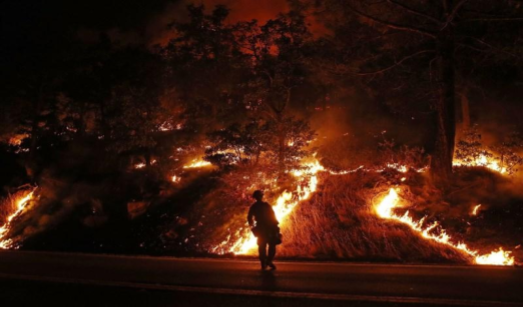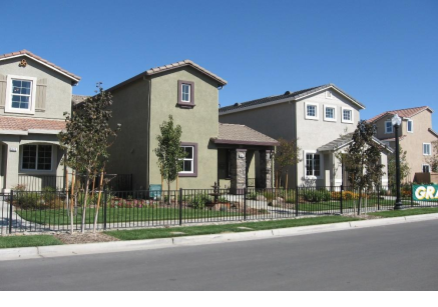 California is no stranger to the unfortunate dangers of wildfires. And, each year, fire season rounds the corner, taking more homes and even lives in its wake. The destruction is undoable, and plenty of lives are at stake. At the beginning of May this year, state officials warned California residents that the 2021 wildfire season could be severe, leading homeowners to worry about what is to come.
California is no stranger to the unfortunate dangers of wildfires. And, each year, fire season rounds the corner, taking more homes and even lives in its wake. The destruction is undoable, and plenty of lives are at stake. At the beginning of May this year, state officials warned California residents that the 2021 wildfire season could be severe, leading homeowners to worry about what is to come.
Losing a home in a wildfire is crushing as it is. And, following the recent insurance crisis that spread throughout the state, residents living in community associations are looking to their homeowners’ associations (HOAs) for how they are handling wildfire emergencies and disasters that have already begun to arise in 2021.
Homeowners Associations in California
As a reliable source for their communities, an HOA’s mission should include the protection and well-being of the community members. Furthermore, one of the duties of HOA boards is to provide convenience and assistance to neighborhoods and homeowners. Often, the goal is to improve the living standards within a community, which includes caring for its property alongside its residents. HOAs are governed by California State Law, and each has legal responsibilities according to their particular Covenants, Conditions, and Restrictions (CC&Rs).
Living in an HOA Community
Although HOA communities have a right to protect their residents and maintain their properties while also offering plenty of amenities, residents are also expected to uphold their end of the bargain by paying any HOA fees as well as following safety regulations; this includes adapting their homes to fire-safe practices. Homeowners should avoid any negligence when it comes to fire safety, including examining heat sources, testing smoke alarms, maintaining electrical cords, etc.
How are California HOAs Affected by Wildfires?
All communities, especially when hit by natural disasters like wildfires, are impacted by problems that occur in their societies. Community associations and HOAs are often relied upon by residents in emergencies, to protect and assist in the welfare of their members.
That said, disasters can strike at any time, and many HOA’s are not adequately prepared for the consequences. Plenty of boards are reliant upon the monthly fees of members to make up for the financial burdens of natural disasters, especially when insurance does not provide sufficient coverage. The financial obligations of associations can quickly become overwhelming and become easily swallowed up by disasters that are out of the board’s control.
Fortunately, HOAs in high fire areas throughout California generally recognize the threat of wildfires and are often prepared for damages. State fire departments and other authorities typically make recommendations for community associations to take heed to when protecting their properties and community members.
Are HOAs Insured for Fire Damage?
California HOAs are legally required to have a minimum level of insurance. Insurance for HOAs is generally known as a “master” policy, and coverage is dependent on the number of separate interests within the community. However, while all fires differ in cause and damage, master policies do not protect the interior of residents’ homes or any resident’s personal property. So, while master policies generally cover fires, they typically only include the common areas and grounds that all homeowners in the community share. Homeowners are expected to have their own home insurance policies to cover personal property damages.
Preparing for Wildfires

Plenty of community associations are built in high-risk fire areas throughout California. And, unfortunately, wildfires are not preventable. That said, there are plenty of ways that California HOAs should be preparing for fire season to protect their residents and their properties from destruction:
I. Fire Scaping
HOAs can protect their properties through fire scaping, which is the process of landscaping in ways that will avoid the spread of wildfires and permit the sustenance of common areas.
Community boards have an obligation not to maintain the brush and greenery themselves but to have and utilize gardening services to care for plants and remove any flammable materials while providing proper irrigation. Additionally, communities should plant new vegetation that holds moisture and is unlikely to ignite where aged or dead plants currently reside. HOA boards in high fire areas should keep track of the following:
- Maintenance of grass, brush, and weeds
- Trees should be trimmed properly, and all dead foliage removed
- No trees should be closer than 10 feet from chimney outlets
- Roof surfaces free of leaves, needles, twigs, and other flammable materials
II. Forming Disaster Plans
Community associations should formulate and upkeep an emergency plan for disasters. Plans should cover what steps to take if the bulk of the community gets destroyed, how to handle a disaster situation financially, and who to contact when an emergency strikes. Not only that, but HOAs should have an evacuation plan mapped out and provided to community members. Arranging for emergency repairs and shutting down access to hazardous areas could also prevent liability and promote community safety.
III. Conducting Maintenance
Ensuring that maintenance is conducted consistently on any and all appliances and hazardous materials can protect the community from potential disasters and enable HOA preparedness in a crisis.
IV. Regular Insurance Audits
While insurance is not often a legal matter for many community associations, California requires a master policy. That said, it is beneficial to ensure that HOA boards have adequate insurance in case of wildfire damage to the community. Regular insurance audits can be an easy way to ensure that the board is protected at all times and sufficiently for potential circumstances, especially if it resides in a high-risk fire location. It is essential for HOAs to pay reasonable premiums, look out for sufficient deductibles, and also research and understand how their insurance company will likely handle potential claims.
V. Educating Homeowners on Fire Safety
While the HOA board has responsibilities to understand and maintain fire safety practices, the community and homeowners are also responsible for their personal properties. Educating community members is a beneficial way to avoid fire damage to the community. Advice, including recommended disposal of fire ashes, proper installation of smoke alarms, etc., can limit or even prevent potential fire damage. And, advising homeowners on fire safety can be useful when protecting the HOA board in legality claims, if necessary.





